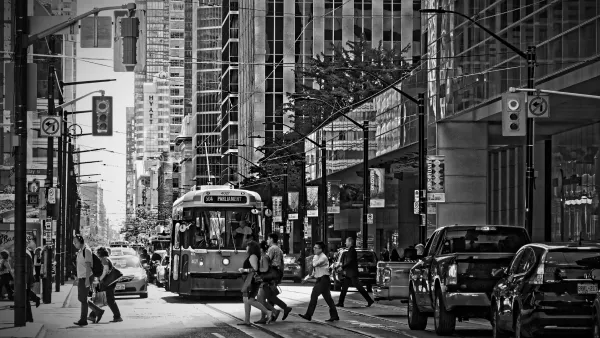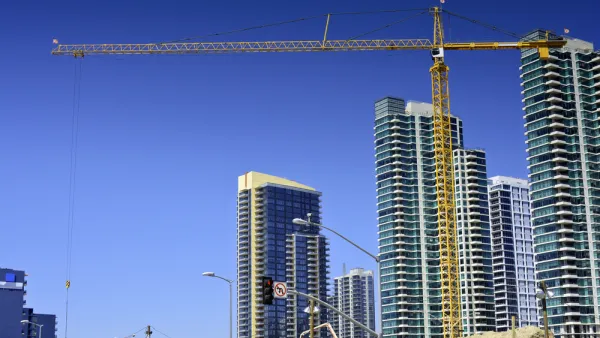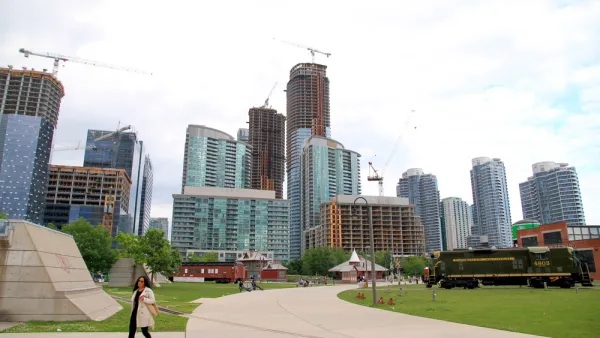It's been over four years since the city of Portland implemented an inclusionary zoning policy that required all new apartment developments to set aside a portion of units for low- and moderate-income housing.

Joe Cortright is a long-time critic of inclusionary policies like the one adopted by the city of Portland, Oregon in December 2016 and implemented in February 2017. Now, four years after Portland adopted its "strong" inclusionary zoning requirement, Cortright is bringing receipts and claiming that inclusionary zoning has drastically slowed apartment construction in the expensive city.
According to Cortright, Portland's inclusionary zoning policy is an outlier compared to other cities in the United States: "Unlike other cities that either made compliance voluntary, or largely (or entirely) offset the cost of the added units with density bonuses or subsidies (or other quid pro quo), the Portland ordinance applied to nearly all apartment buildings larger than 20 units."
Cortright reported in 2019 that the new policy resulted in a flood of apartment buildings that was more like a "Wile E. Coyote moment," when the infamous cartoon character goes charging off a cliff before realizing there's no ground beneath him. "The open question right now is whether the City of Portland’s housing market is in its Wylie Coyote phase. To hear the City of Portland housing bureau tell the story, everything is fine: Housing permit activity is chugging along at relatively high levels," wrote Cortright at the time.
Now, Wile E. Coyote is falling, says Cortright.
Data compiled by local economic consulting firm ECONorthwest tracks the number of apartment permits issued in Portland over the past 15 years. It shows the surge in new apartments in 2017 largely holding up in 2018 and 2019, but then plummeting by roughly two-thirds in 2020, from an average of 4,500 new apartments per year to fewer than 1,500.
Other analysis agree that apartment development permits are plummeting, according to the article. And there's more data that suggests the trend is only beginning. Again citing ECONW data, Cortright writes: "The number of set ups for apartment units peaked in 2016 and 2017 at slightly more than 6,000 new units per year. Since then, new setups have declined by a third in 2018 and 2019 to about 4,000 per year. In 2020, new setups were about 2,600, less than half their 2017 level."
With national market observers predicting a post-pandemic building boom, Cortright argues that developers are likely to stay out of the Portland market until prices rise significantly, or until the city relaxes its inclusionary zoning policy.
Cortright is able to identify another effect of the city's inclusionary zoning policy, like smaller buildings, in a reflection of the "Mansard Effect"—the effect of land use regulations on architectural form made famous in by the windows in Paris.
FULL STORY: Inclusionary Zoning: Portland’s Wile E. Coyote moment has arrived

National Parks Layoffs Will Cause Communities to Lose Billions
Thousands of essential park workers were laid off this week, just before the busy spring break season.

Retro-silient?: America’s First “Eco-burb,” The Woodlands Turns 50
A master-planned community north of Houston offers lessons on green infrastructure and resilient design, but falls short of its founder’s lofty affordability and walkability goals.

Delivering for America Plan Will Downgrade Mail Service in at Least 49.5 Percent of Zip Codes
Republican and Democrat lawmakers criticize the plan for its disproportionate negative impact on rural communities.

Test News Post 1
This is a summary

Test News Headline 46
Test for the image on the front page.

Balancing Bombs and Butterflies: How the National Guard Protects a Rare Species
The National Guard at Fort Indiantown Gap uses GIS technology and land management strategies to balance military training with conservation efforts, ensuring the survival of the rare eastern regal fritillary butterfly.
Urban Design for Planners 1: Software Tools
This six-course series explores essential urban design concepts using open source software and equips planners with the tools they need to participate fully in the urban design process.
Planning for Universal Design
Learn the tools for implementing Universal Design in planning regulations.
EMC Planning Group, Inc.
Planetizen
Planetizen
Mpact (formerly Rail~Volution)
Great Falls Development Authority, Inc.
HUDs Office of Policy Development and Research
NYU Wagner Graduate School of Public Service





























